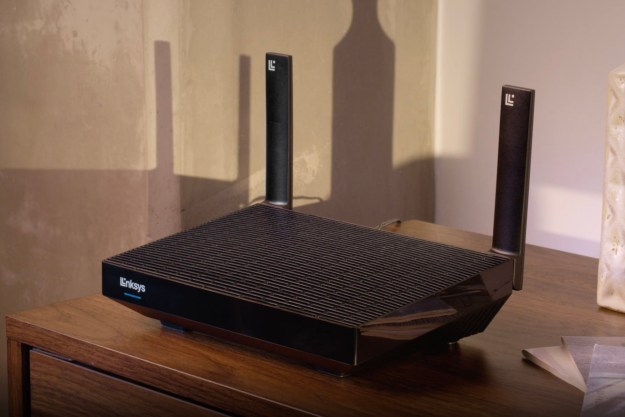The next evolution of home connectivity, Wi-Fi 7, is coming soon. Qualcomm executives have announced expectations to see whole-home mesh networks and Wi-Fi 7 routers as early as next year.
With Wi-Fi 7, Qualcomm anticipates wireless speeds to reach up to 33 Gbps. And when compared to Wi-Fi 6 and Wi-Fi 6E, the next evolution of Wi-Fi will bring significantly wider channels that will help connect more devices, lower latency, and bring even faster speeds.

This makes Wi-Fi 7 more than three times as fast as Wi-Fi 6E, and the new standard has double the channel width to handle more traffic.
To make Wi-Fi 7 a reality, Qualcomm is beginning to sample its new Wi-Fi 7 chipset to customers. Company executives stated that reference designs will likely arrive later this year with commercial availability likely in 2023 if previous timelines for major Wi-Fi standard revisions are to be followed.
“Qualcomm Technologies has enabled the era of 10 Gbps Wi-Fi with our first customer deliveries of the Wi-Fi 7 Networking Pro Series family,” said Nick Kucharewski, senior vice president and general manager, Wireless Infrastructure and Networking, Qualcomm Technologies, Inc. “Combining support for the latest Wi-Fi 7 innovations with our unique product platform architecture, the platform enables solutions ranging from whole-home mesh to powerful connectivity networks for large public venues.”
In addition to Qualcomm, rival Mediatek had showcased Wi-Fi 7 as part of a CES marketing blitz earlier this year.
Compared to prior generations of Wi-Fi, Wi-Fi 7 is positioned for simultaneous multi-link operations and comes with up to quad-band configurations. Qualcomm’s Networking Pro Series chipset works on the 2.4GHz, 5GHz, and 6GHz spectrum, and with a very wide 320MHz channel, the result is that you can see up to twice the increase in throughput compared to Wi-Fi 6.
Up to 500 users can connect to Wi-Fi 7 per channel. Wi-Fi 7 will also be able to aggregate connections between multiple different bands to help drive even faster connections, with peak aggregate speeds of up to 33Gbps and point-to-point connections in excess of 10 Gbps.
“The products can support high-speed low-latency wireless backhaul for home mesh Wi-Fi and enterprise infrastructure with reliable performance even in the presence of neighboring interference,” the company said, noting that Wi-Fi 7 will be able to drive even lower latency. These benefits will definitely be appreciated in new applications such as high-resolution video conferencing, augmented and virtual reality sessions, and high-performance gaming.

A key speed benefit here is the ability of Wi-Fi 7 to dynamically adjust to interference with multi-link technology. Rather than cutting down the available channel by as much as half like on Wi-Fi 6, Wi-Fi 7 can just cut out the spectrum where the interference is located, freeing up the rest of the channel for your Wi-Fi connections.
“Multi-Link technology enables customer traffic to dynamically aggregate or alternate bands to avoid wireless interference and deliver deterministic, predictable low latency in heavily congested environments,” Qualcomm explained. “HBS Multi-Link leverages only the high performance 5 and 6GHz bands to deliver the best throughput and latency Multi-Link performance.”
The chipset will be available in multiple configurations ranging from six streams to 16 streams with peak speeds of 10.8Gbps to 33.1Gbps. Qualcomm noted that it will be up to partners — including names like TP-Link, Amazon Eero, and Netgear — to configure the devices with the specifications needed to target their customers.
For home users looking forward to a Wi-Fi 7 future, you’ll likely need a home broadband plan that’s capable and fast enough to maximize the value. Even today’s Wi-Fi 6E maximum speeds are well in excess of what most home plans can handle. However, even with home broadband plans significantly slower than the maximum 33Gbps promised by Wi-Fi 7, Qualcomm executives stated that there are still benefits to upgrading to the tech.
As you use Wi-Fi around the home, signal and structural interference can affect Wi-Fi speeds, and the higher maximum PHY rate can help serve as a buffer for any major speed drop-offs. Second, the higher maximum PHY and throughput rates supported by the new protocol will help mesh networks perform more strongly and will help satellite nodes deliver faster speeds to devices connected to them.
In addition to routers and mesh systems, you’ll also need devices equipped with Wi-Fi 7 radios, ranging from smartphones and tablets to desktops and gaming consoles, in order to take full advantage of the benefits of this new wireless standard.
Editors' Recommendations
- How to change your router’s Wi-Fi password
- Google Nest Wi-Fi Pro adds Wi-Fi 6E but loses compatibility
- Google’s Nest Wifi Pro leaks weeks ahead of Pixel event
- The key to fixing your bad Wi-Fi connection may finally be here
- Intel could give us Wi-Fi 7 devices long before Apple gets around to it


